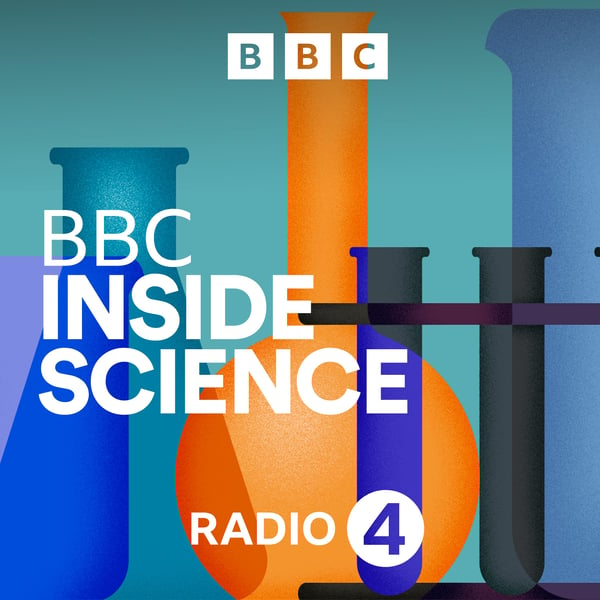Antimicrobial soap; GAIA; Stone-age jellybones; Antarctica
BBC Inside Science
BBC
4.5 • 1.3K Ratings
🗓️ 19 December 2013
⏱️ 29 minutes
🧾️ Download transcript
Summary
Antibacterial soaps and body washes make up an industry worth millions of pounds, but in the USA, producers have been told that they have just over a year to prove their products are safe, or, re-label or reformulate them. Many believe that using antimicrobial soaps, which often include the chemicals triclosan or triclocarban, keeps you clean and reduces the chance of getting ill or passing on germs to others. But the Food and Drug Administration in the USA says it's the job of manufacturers to demonstrate the benefits, to balance any potential risks. Professor Jodi Lindsay, expert in microbial pathogenesis from St Georges, University of London, tells Dr Adam Rutherford where this leaves British and European consumers.
The world's most powerful satellite camera was launched today into space. Its mission, to map the billion stars in our galaxy. Professor Gerry Gilmore, Principal Investigator for GAIA, tells Inside Science about the planned "walk through the Milky Way" and BBC Science Correspondent, Jonathan Amos, spells out how GAIA could help detect future asteroids, like the one that wiped out the dinosaurs on earth.
Just after the Second World War in a site in North Yorkshire, the discovery of a flint blade triggered the discovery of one of the world's most important Mesolithic or Stone Age sites. What makes Star Carr so special is that organic artefacts, bone harpoons, deer headdresses and even homesteads, were preserved in the peat 11000 years ago. But these precious artefacts are in trouble. Changing acidic conditions are turning the Mesolithic remains to jelly. Sue Nelson reports from the Vale of Pickering on how archaeologists are working with chemists to try to pinpoint exactly why the Stone Age remains are deteriorating so quickly.
And Professor Chris Turney talks to Adam from his research ship in Commonwealth Bay in the Antarctic, where he is leading a team of scientists to recreate the journey made by Douglas Mawson, 100 years ago, on the Australasian Antarctic Expedition.
Producer: Fiona Hill.
Transcript
Click on a timestamp to play from that location
| 0:00.0 | Just before this BBC podcast gets underway, here's something you may not know. |
| 0:04.7 | My name's Linda Davies and I Commission Podcasts for BBC Sounds. |
| 0:08.5 | As you'd expect, at the BBC we make podcasts of the very highest quality featuring the most knowledgeable experts and genuinely engaging voices. |
| 0:18.0 | What you may not know is that the BBC makes podcasts about all kinds of things like pop stars, |
| 0:24.6 | poltergeist, cricket, and conspiracy theories and that's just a few examples. |
| 0:29.7 | If you'd like to discover something a little bit unexpected, find your next podcast over at BBC Sounds. |
| 0:36.0 | Hello you, I'm Adam Rutherford and this is the BBC Insight Science Podcast. |
| 0:40.0 | Last one of the year from me, Anatomist, Dr. Osteo-archiologists, commander of the armies of the |
| 0:44.9 | North and general all-round good egg Professor Alice Roberts will be silencing up your ears for the next couple of weeks. |
| 0:50.0 | And a big jolly thank you to the unsung heroes of inside science, the Legion producers, |
| 0:54.5 | Michelle Martin, Melissa Hockenboom, Marnie Cheserton and Fiona Hill, they're utterly fab. |
| 0:59.6 | Terms and conditions can be found and subsequently ignored at BBC.co. |
| 1:03.5 | UK slash Radio 4. |
| 1:06.3 | This week we'll be hearing from, in descending order of glamour, |
| 1:09.5 | Adely penguins hanging around a research ship in Commonwealth Bay, Antarctica. |
| 1:14.0 | A dini Penguin Heaven here, everywhere. |
| 1:17.0 | They're just huge amounts of them. |
| 1:19.0 | They're on shore, they leap out onto the surface, they're swimming past just incredibly graceful creatures and they're |
| 1:24.9 | far noisier than you think. And I'll launch today of another ship it's our |
| 1:28.8 | latest voyage Véléllezitual. |
| 1:30.6 | This nouff absurdly high resolution star spotting from a Lagrangian point 1.5 million kilometers from the sun. |
| 1:41.0 | It's equivalent to locating the center of a star every time it's measured to an |
... |
Transcript will be available on the free plan in -4116 days. Upgrade to see the full transcript now.
Disclaimer: The podcast and artwork embedded on this page are from BBC, and are the property of its owner and not affiliated with or endorsed by Tapesearch.
Generated transcripts are the property of BBC and are distributed freely under the Fair Use doctrine. Transcripts generated by Tapesearch are not guaranteed to be accurate.
Copyright © Tapesearch 2025.

